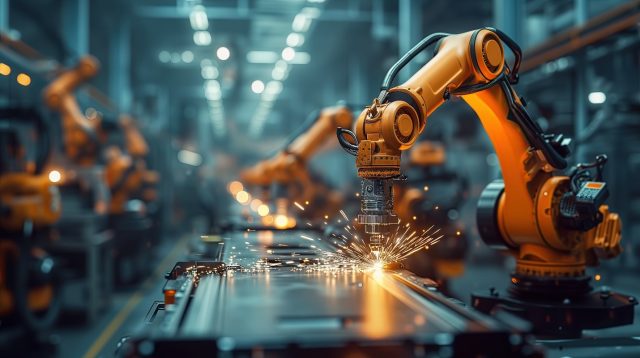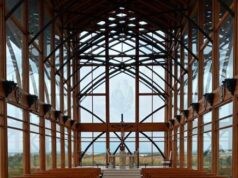The field of robotics is evolving at an unprecedented pace, driven by advances in artificial intelligence (AI), machine learning, sensors, and computing power. As we look towards the next decade, several emerging trends are set to redefine industries, healthcare, and our daily lives. This post from robotic professional Christopher Peyton Crawford explores these trends and offers predictions on the future landscape of robotics.
- Enhanced Human-Robot Collaboration
Trend: Christopher Peyton Crawford explains that the rise of collaborative robots (cobots) is transforming workplaces by working alongside humans without the need for safety cages. These robots are designed with advanced sensors and AI to ensure safe interaction with humans.
Prediction: In the next decade, cobots will become ubiquitous in manufacturing plants, warehouses, and service industries, enhancing productivity and safety. Their ease of programming and versatility will make them an integral part of small and medium-sized enterprises. - Autonomous Vehicles and Drones
Trend: Autonomous technology is not just limited to self-driving cars but extends to drones and unmanned aerial vehicles (UAVs) used for delivery, surveillance, and environmental monitoring.
Prediction: By 2030, we’ll see significant advancements in regulatory frameworks and public acceptance, paving the way for the widespread use of autonomous vehicles and drones. This will revolutionize logistics, reduce traffic accidents, and open new avenues for remote monitoring and services. - Personal and Service Robots
Trend: The market for personal and service robots, from robotic vacuum cleaners to personal assistants, is expanding rapidly. These robots are becoming more sophisticated, capable of more complex tasks and interactions, notes Christopher Peyton Crawford.
Prediction: The next decade will witness a surge in intelligent personal robots that can perform various household tasks, offer companionship, and provide personalized services, making life easier and more comfortable for individuals. - Medical and Healthcare Robotics
Trend: Robotics in healthcare is advancing beyond surgical robots to include rehabilitation robots, telepresence robots, and robots for elderly care. These technologies are enhancing patient care and making healthcare services more accessible.
Prediction: We will see a boom in healthcare robotics, with robots playing a critical role in remote surgery, patient rehabilitation, and care for the aging population. Innovations in soft robotics and AI will make these robots more adaptable and sensitive to human needs. - AI and Machine Learning Integration
Trend: Integrating artificial intelligence (AI) and machine learning (ML) into robotics is revolutionizing the field of robotics by making robots much more innovative, more autonomous, and capable of learning from their environment and experiences. AI and ML algorithms enable robots to perform complex tasks such as recognizing and manipulating objects, navigating through complex environments, and even interacting with humans more naturally. This technology also allows robots to adapt to new situations and environments, making them more versatile and valuable in various applications, from manufacturing and healthcare to space exploration and search and rescue missions.
Prediction: In the next decade, Christopher Peyton Crawford believes AI-powered robots will achieve unprecedented autonomy and adaptability. They can perform complex decision-making, adapt to new tasks through learning, and even develop innovative solutions to problems. - Swarm Robotics
Trend: Inspired by the collective behavior of natural systems, such as flocks of birds or ant colonies, swarm robotics focuses on the coordinated behavior of multiple robots to perform tasks more efficiently than a single robot could.
Prediction: Swarm robotics will find applications in environmental monitoring, search and rescue operations, and agriculture. These robot swarms will be capable of complex, coordinated tasks, offering flexibility and resilience. - Robotics as a Service (RaaS)
Trend: Robotics as a Service (RaaS) models are emerging, allowing businesses to lease robotic systems and services rather than purchasing them outright. This lowers the barrier to entry for adopting automated technologies.
Prediction: RaaS will become a dominant model in the robotics industry, enabling more businesses to leverage robotic solutions for logistics, inventory management, and customer service without the need for significant upfront investment. - Ethical and Regulatory Developments
Trend: As robots become more integrated into society, ethical and regulatory questions become more pressing. Issues around privacy, job displacement, and accountability are already being discussed.
Prediction: The next decade will see the development of comprehensive ethical guidelines and regulatory frameworks for robotics. These will address concerns about privacy, safety, and the socioeconomic impacts of robotics, ensuring responsible development and deployment of robotic technologies.
The future of robotics promises to bring about transformative changes across various sectors. As we navigate these advancements, Christopher Peyton Crawford believes fostering innovation and addressing the ethical and societal implications of integrating robots into our daily lives and workplaces is crucial. The next decade in robotics will challenge not only our technological capabilities but also our adaptability and ingenuity in harnessing these technologies for the betterment of society.









